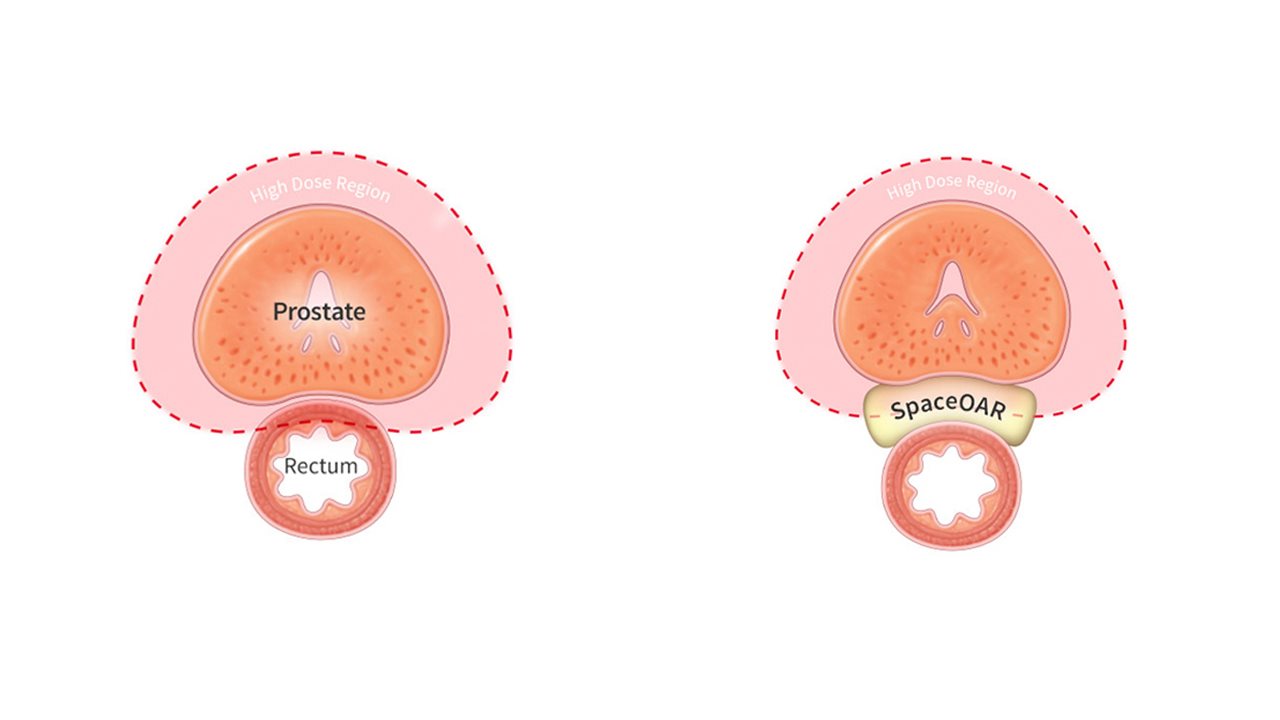2023-08-04T16:01:00
(BPT) – Content Provided by Boston Scientific
Prostate cancer is the second most common cancer for American men, yet receiving a diagnosis can feel unexpected.[1] While some people experience symptoms like increased frequency of difficulty starting urination, trouble emptying the bladder, or weak or interrupted flow, some men are asymptomatic and feel fine before being diagnosed.[2]
Receiving a diagnosis can leave a person feeling overwhelmed, especially when navigating treatment options. Prostate cancer treatments can vary and include active surveillance (monitoring the cancer with blood and imaging tests), surgery to remove all or part of the prostate or radiation therapy.[3] It is important for patients to speak with a doctor to determine treatment options.
For those being treated with radiation therapy, which may be recommended for early or more advanced stages of prostate cancer, here are four questions that you may want to ask your doctor:[4]
1. How common is prostate cancer radiation therapy and how does it work?
Each year in the U.S., more than 60,000 men opt for radiation therapy to treat their prostate cancer.[5] Radiation therapy works by using high-energy rays to kill cancer cells and is typically given five days a week in an outpatient center for several weeks at a time.[6]

2. What are the benefits and risks of radiation therapy?
Radiation therapy is a commonly recommended treatment option that has contributed to a relative five-year survival rate of 98%, making it appealing to many doctors and patients.[7],[8] While the therapy can be effective, it can have unwanted side effects, including urinary leakage, bowel leakage and diminished erectile function. Due to the proximity of the prostate and the rectum, radiation therapy to the prostate can unintentionally cause damage to the rectum and other surrounding organs.[9]

3. Are there options to reduce the side effects of radiation therapy for prostate cancer?
There are options that may help to reduce side effects of radiation therapy, including SpaceOAR™ Hydrogel. SpaceOAR Hydrogel is a polyethylene glycol (PEG) based hydrogel that temporarily creates space between the prostate and the rectum, designed to minimize radiation side effects.[10] By adding a small amount of space, SpaceOAR Hydrogel may help reduce radiation damage to the rectum.[11] SpaceOAR Hydrogel is clinically shown to minimize urinary, sexual and bowel side effects when compared to the control, and may help maintain quality of life for prostate cancer patients undergoing radiation therapy.[11],[12],[13]

4. Where is a rectal spacer insertion procedure performed?
SpaceOAR Hydrogel can be implanted as an outpatient procedure in a doctor’s office, hospital, outpatient clinic or surgery center prior to the start of radiation treatment.[10] It stays in place for about three months and is naturally absorbed into the body and removed through urine in about six months.[10]
Talk to your doctor to determine the best treatment options for you. Visit www.SpaceOAR.com/radiation for more information about SpaceOAR Hydrogel.
References
[1] Cancer Facts for Men. American Cancer Society. Available at: https://www.cancer.org/healthy/cancer-facts/cancer-facts-for-men.html. Accessed May 2023.
[2] What Are the Symptoms of Prostate Cancer? Centers for Disease Control and Prevention. Available at: https://www.cdc.gov/cancer/prostate/basic_info/symptoms.htm. Accessed May 2023.
[3] How Is Prostate Cancer Treated? Centers for Disease Control and Prevention. Available at: https://www.cdc.gov/cancer/prostate/basic_info/treatment.htm. Accessed May 2023.
[4] Radiation Therapy for Prostate Cancer. Johns Hopkins Medicine. Available at: https://www.hopkinsmedicine.org/health/conditions-and-diseases/prostate-cancer/radiation-therapy-for-prostate-cancer. Accessed May 2023.
[5] Treatment for Prostate Cancer: External-Beam Radiation Therapy. Prostate Cancer Foundation. Available at: https://www.pcf.org/c/treatment-for-prostate-cancer-external-beam-radiation-therapy/. Accessed May 2023.
[6] Radiation therapy. Mayo Clinic. Available at: https://www.mayoclinic.org/tests-procedures/radiation-therapy/about/pac-20385162. Accessed May 2023.
[7] Radiation Therapy: Effective for Prostate Cancer. Radiation Oncology Targeting Cancer. Available at: https://www.targetingcancer.com.au/2015/02/radiation-therapy-95-effective-prostate-cancer/. Accessed May 2023.
[8] Survival Rates for Prostate Cancer. American Cancer Society. Available at: https://www.cancer.org/cancer/prostate-cancer/detection-diagnosis-staging/survival-rates.html. Accessed May 2023.
[9] Radiation Therapy for Prostate Cancer. American Cancer Society. Available at: https://www.cancer.org/cancer/types/prostate-cancer/treating/radiation-therapy.html. Accessed May 2023.
[10] Data on file with Boston Scientific.
[11] Mariados N, Sylvester J, Shah D, et al. Hydrogel spacer prospective multicenter randomized controlled pivotal trial: dosimetric and clinical effects of perirectal spacer application in men undergoing prostate image guided intensity modulated radiation therapy. Int J Radiat Oncol Biol Phys. 2015 Aug 1;92(5):971-7.
[12] Hamstra DA, Mariados N, Sylvester J, et al. Continued benefit to rectal separation for prostate radiation therapy: Final results of a phase III trial. Int J Radiat Oncol Biol Phys. 2017 Apr 1;97(5):976-85.
[13] Karsh LI, Gross ET, Pieczonka CM, et al. Absorbable hydrogel spacer use in prostate radiotherapy: A comprehensive review of phase 3 clinical trial published data. Urology. 2018 May;115:39-44.
SpaceOAR Hydrogel is intended to temporarily move the rectal wall away from the prostate during the course of radiotherapy treatment for prostate cancer, and in creating this space it is the intent of SpaceOAR Hydrogel to reduce the radiation dose affecting the rectum.
SpaceOAR Hydrogel contains polyethylene glycol (PEG). As with any medical treatment, there are some risks involved with the use of SpaceOAR Hydrogel. Potential complications associated with SpaceOAR Hydrogel include, but are not limited to: pain associated with injection, pain or discomfort from the hydrogel, site inflammation, infection (including abscess), inability to urinate, urgent need to urinate, constipation, rectal muscle spasm, damage to lining of rectum, ulcers, fistula (a hole between rectum and bladder, urethra, or skin below the scrotum), perforation (hole in prostate, bladder, urethra, rectum), necrosis (dead tissue), allergic reaction (local reaction or more severe reaction, such as anaphylaxis), embolism (blood vessel blockage is possible and may happen outside of the pelvis, potentially impacting vital organs or legs), fainting, and bleeding. Please talk to your doctor about the risks and benefits related to using SpaceOAR Hydrogel. If one or more of these complications occur, you may need medical treatment or surgery. URO-1288805-AA
This material is for informational purposes only and not meant for medical diagnosis. This information does not constitute medical or legal advice, and Boston Scientific makes no representation regarding potential medical benefits included in this information. Boston Scientific strongly recommends that you consult with your physician on all matters pertaining to your health.
Caution: U.S. Federal law restricts this device to sale by or on the order of a physician.
All images are the property of Boston Scientific. All trademarks are the property of their respective owners.
©2023 Boston Scientific Corporation or its affiliates. All rights reserved. URO-1632107-AA JUL 2023


